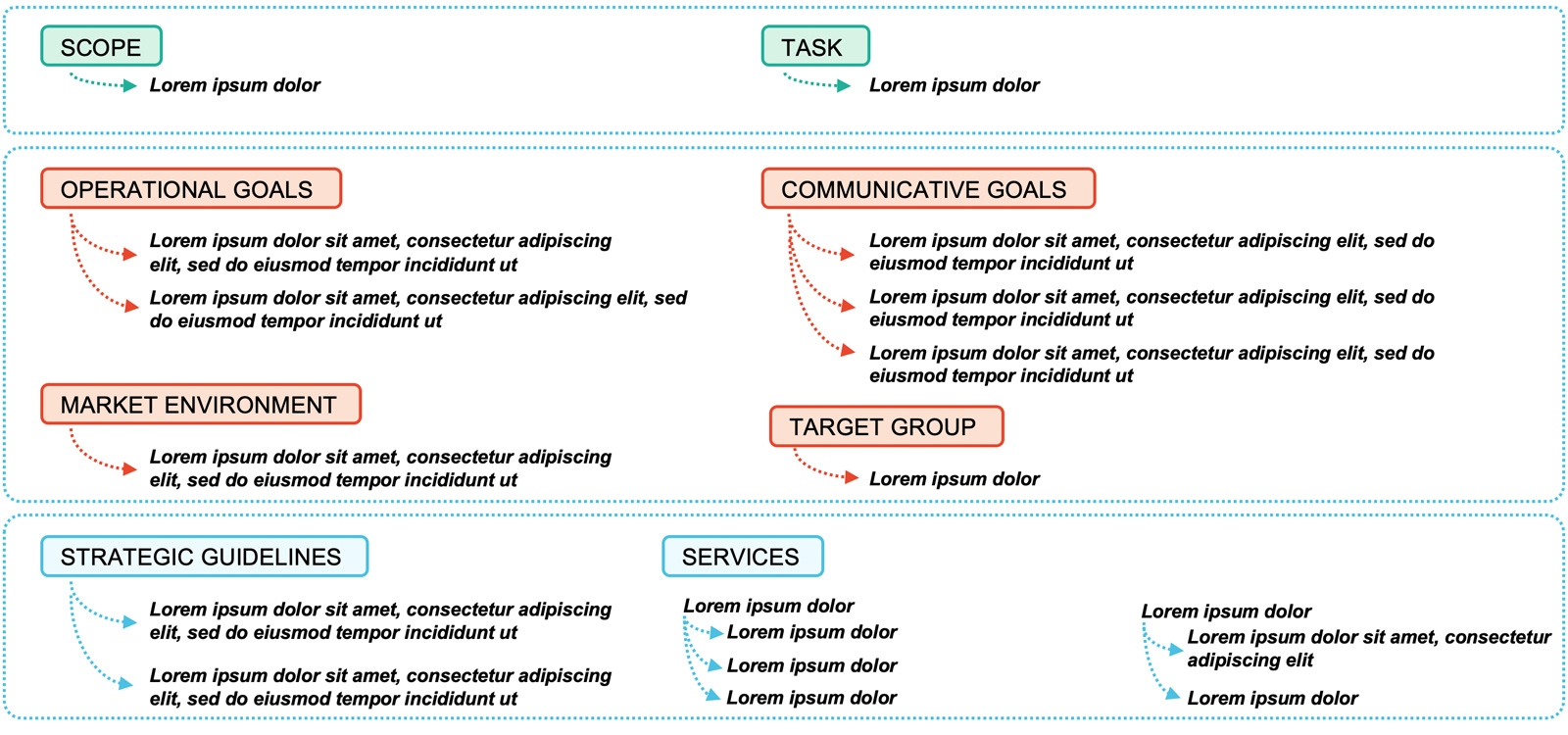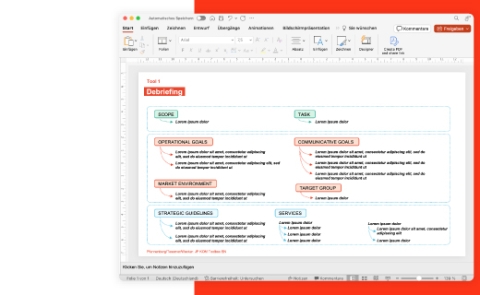Debriefing

Guiding question
What is the task to be accomplished by the communication strategy?
Objectives
- Clearly define the subject matter of the task
- Establish a common understanding of the task between client and contractor
- Embedd the communication task in the company's strategy
- Gain criteria for the quality check of the conception
Implementation
The briefing for the development of the communication strategy can be done in many ways: orally, in writing in prose, as a PowerPoint slide (PPT) or in a combination of these communication channels.
Topics and quality of briefings vary greatly in practice. Ideally, the briefing contains information about the scope and task of the communications strategy, about the operational or strategic background (for example, in marketing/sales or in mergers & acquisitions), the market environment (regulatory framework, competition, etc.), as well as the communications objectives and the requested services (scope in the narrower sense). Many clients also make strategic specifications that are derived from the corporate strategy.
Briefings often do not have a stringent logical structure. I.e., situation descriptions, objectives, market backgrounds and ideas for measures are mixed up, there are repetitive structures and gaps in content. Therefore, in the debriefing, the contractor summarizes in a structured way how he understood the task.
The written debriefing is usually the basis for a debriefing discussion or a debriefing call. In this phase, the contractor asks further questions about the task and/or obtains additional information, ensures that the task is understood correctly, explores cultural or other constellations in the buying center, and in some cases also checks the client's acceptance of the initial solution approaches. The debriefing goes into the design as a task.
The steps for debriefing are:
- The relevant information is drawn from the briefing document.
- Each piece of information is written on a card.
- The information is assigned to the categories of the debriefing tool.
- The information is translated into advertising or management language.
- Missing information is supplemented or formulated as a question to the client.
